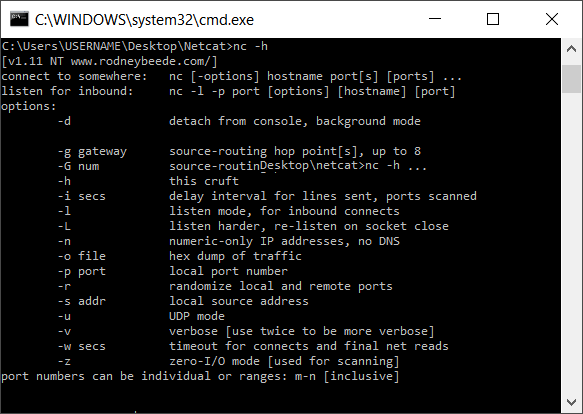
Instead of the REMOTE_COMPUTER_IP_ADDRESS, you should type in the actual IP address for your server.

In this example, I’ve told Netcat to scan all ports in the 2000-5000 range on the remote computer. To use Netcat as a port scanner, you need to run it with the -z option: netcat -z -v -n REMOTE_COMPUTER_IP_ADDRESS 2000-5000

If you already have a specific port in mind, you can skip ahead to the next step. Now, the first step is to scan for open ports on your server. First, you’re going to need your PC and a remote computer or server. Setting up a network listener with Netcat is actually quite easy. How to Set up a Netcat Listener on a TCP/UDP Port Reading the rest of this guide will give you a few examples of using Netcat. You can combine this with other commands to do port scanning, data transfer, and more. In this command, the -l option tells Netcat to listen to a port. So, to use Netcat listener, you simply need to enter the following command into the Linux Terminal: netcat -l You don’t even need to run it as “super-user” (sudo) unless you want to access port numbers below 1024. It’s actually very easy to use Netcat listener by running the Netcat command. How to Use Netcat Listener from Linux Terminal?

Of course, the Netcat listener can also be used to send data or even files over the network, but since it is not really secure, it’s not a reasonable option. Now, let’s get right to the instructions and see how we can use Netcat to listen in on suspicious ports. You can learn more about ports by reading this article on port forwarding. That’s why one of the primary tasks of firewalls is to block all unused ports on servers. Ports are like communications channels into and out of any computer, and all data needs to pass through them.

Programs communicate data over the network using the TCP and UDP protocols, which require the use of ports.


 0 kommentar(er)
0 kommentar(er)
